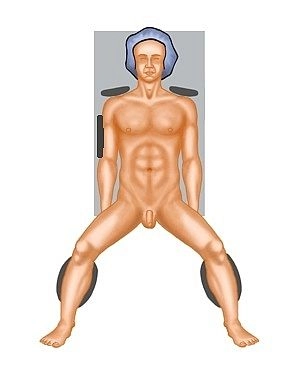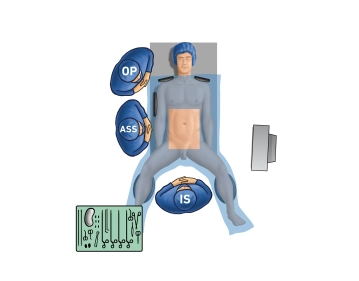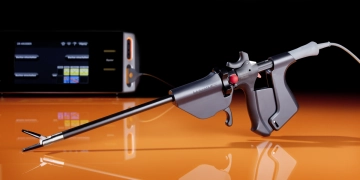3.1 Standard diagnostics
Medical history
- Prolapse: Only during defecation, during physical efforts, permanent
- Passage of mucus (due to mucositis: mechanical mucosal stress from the intussusception)
- Passage of blood, e.g., due to ulcus recti simplex (benign, common in rectal prolapse, always anterior)
- Constipation/diarrhea, at times alternating
- Feeling of incomplete evacuation = repetitive trips to the toilet with violent, futile straining
- Pencil-shaped stools, scyballa
- Tenesmus
- Incontinence Spotting, pruritus ani
- In women often combined perineal descent and urinary incontinence
- Social compromises: For example, there must always be a toilet close by, fasting before leaving home
Inspection/straining attempt
No matter how impressive advanced rectal prolapse may be: It is easily overlooked if it only occurs during defecation and the patient shamefully avoids strong straining during the examination or, which is not that uncommon, confuses straining with contracting the anus.
- Often the prolapse appears only after several attempts at straining
- If necessary, examine the patient squatting or on the commode
- Characteristic in procidentia (complete rectal prolapse): Concentric mucosal folds
Digital rectal examination
- Active contraction and relaxation allow a rough assessment of the sphincter musculature
- During straining, an intussusception or rectocele may be palpated.
- Induration of mucosal areas: Possibly indicating solitary rectal ulcer
Endoscopy
Proctoscopy
- Intussusception is often (not always) recognizable as a protrusion of the anterior rectal wall through the anal canal when the proctoscope is retracted to the distal end of the anal canal and the patient is asked to strain.
Rectoscopy
- May possibly demonstrate solitary rectal ulcer (always located anteriorly)
- Distal proctitis beginning at the anorectal transition and ending abruptly at 10-12 cm from the anal verge and often accompanied by rectal prolapse
Colonoscopy
- Standard preoperative modality for examining colorectal topography and ruling out additional pathologies
Functional diagnostic work-up.
Functional studies such as anorectal manometry are recommended for patients with rectal prolapse because, in addition to evaluating continence, they can also screen out patients who will remain incontinent despite rectopexy.
In manometry, low resting and contraction pressures are characteristic for combined rectal prolapse and incontinence.
3.2 Additional diagnostic work-up
Additional functional examinations such as electromyography and nerve conduction measurements are reserved for special cases.
Videoproctography can confirm internal prolapse and is not needed in external rectal prolapse.
Endoluminal ultrasonography (EUS) is helpful in suspected sphincter defects.
1. Special preparation
- Orthograde intestinal cleansing, e.g., with polyethylene glycol
- Shaving the abdominal field
In the OR:
- Perioperatively single-shot antibiotics with a first-generation cephalosporin (e.g., cefazolin 2g) and intravenous metronidazole 500mg
- Urinary catheter
2. Informed consent
General risks
- Bleeding
- Secondary bleeding
- Necessity of blood transfusions with corresponding transfusion risks
- Thromboembolism
- Wound infection
- Abscess
- Injury of adjacent organs/structures (left ureter, iliac vessels, internal genitals in women, bladder, spleen, kidney, pancreas)
Special risks
- Anastomotic failure with local or generalized peritonitis and sequelae of sepsis; revision surgery; Hartmann operation; or diverting ileostomy
- Erectile dysfunction, fecal incontinence and dysfunctional bladder evacuation due to injury of the inferior hypogastric nerves
- Intraabdominal abscess formation
- Primary diverting ileostomy or primary Hartmann operation
- Conversion
- Changed defecation behavior
- Trocar site hernia
- Risk of stapler injury to the sphincter muscles
- Recurrent prolapse
- Postoperative constipation
- Persistent fecal incontinence or residual incontinence



